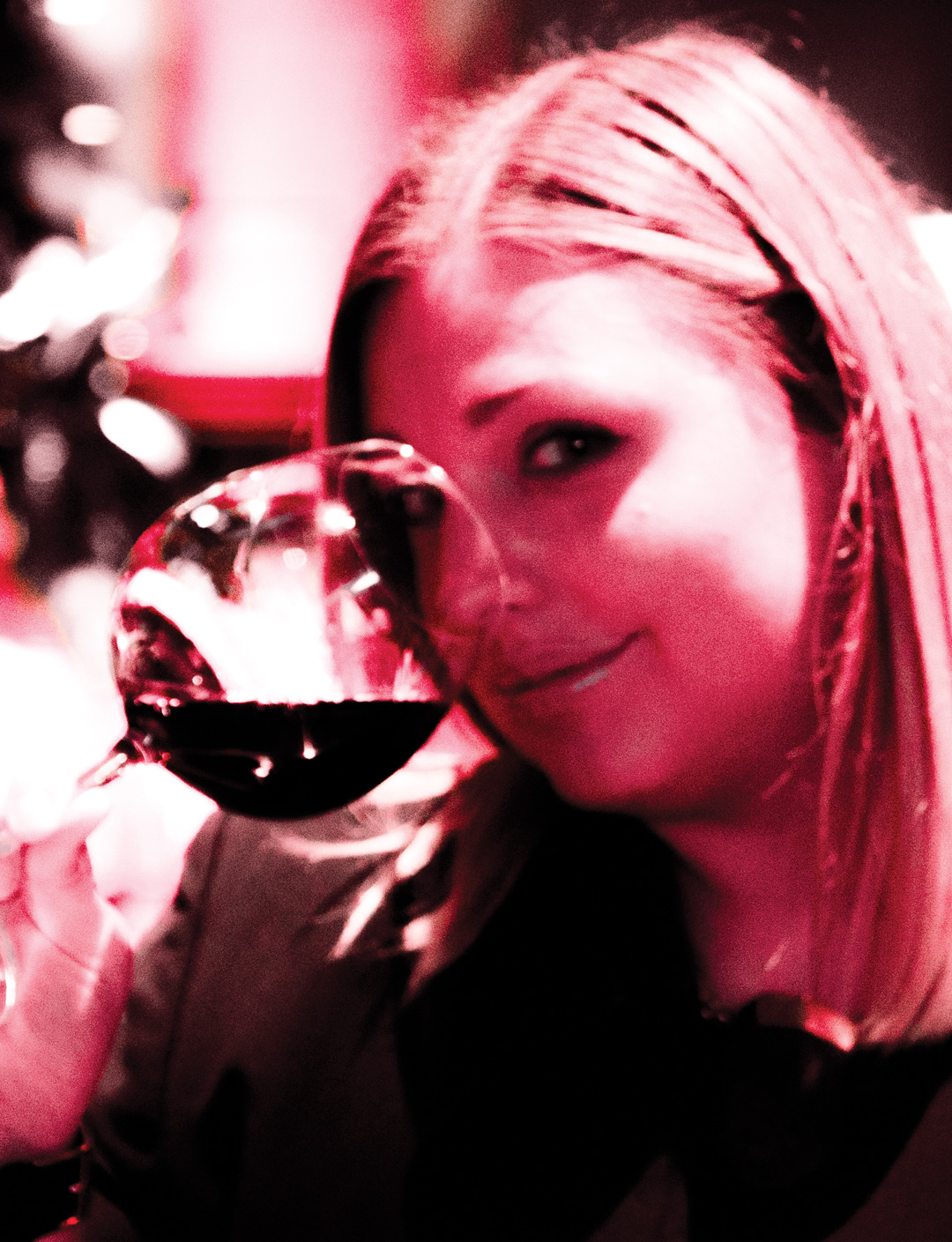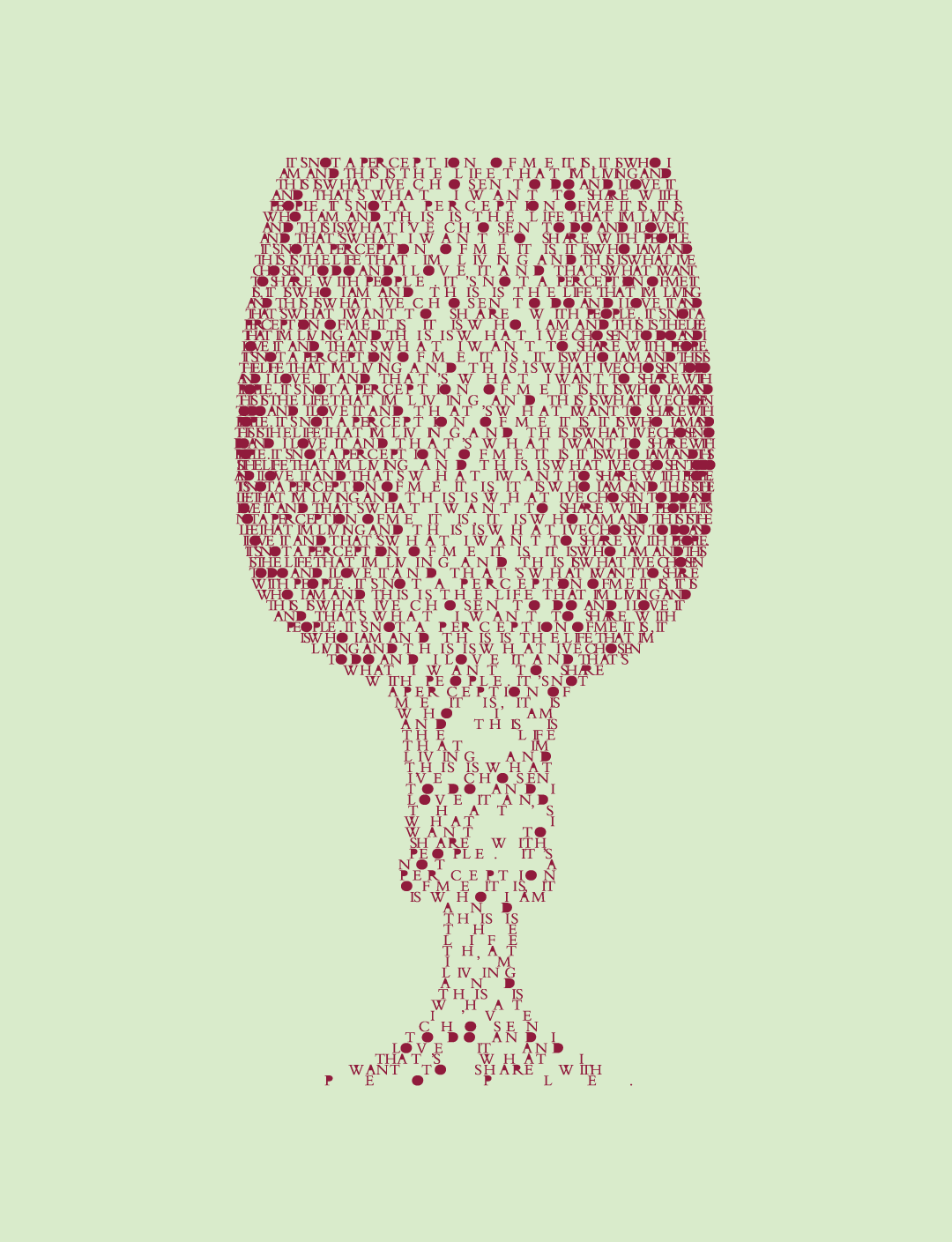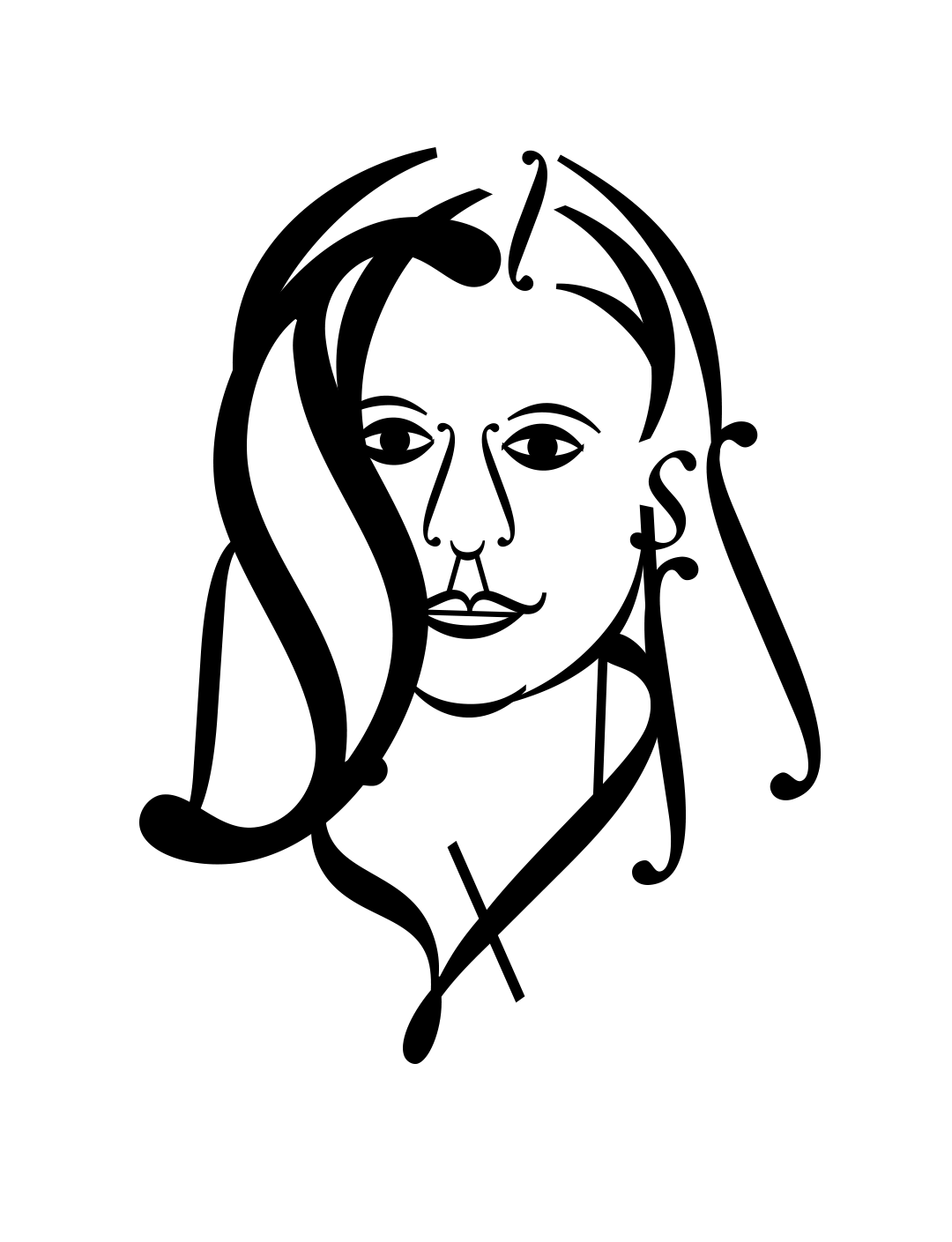Samantha Payne--- 26 July 2015
By Lorenzo Princi
What do you do?
What do I do? Such a mixed bag of things, I am a Sommelier, a wine writer, wine consultant-- sort of-- yeah, I do lots of things in the industry basically, mainly around wine.
Where does your love of wine come from?
[Laughs] everyone always asks me how-- how I got into the job that I’m in. So it’s-- so I was doing a degree at Uni in Art History and English literature because I was so certain that I was going to become a curator for a museum and-- I’d always loved art-- always what I wanted to do.
So, I was actually working part-time at an upscale bottle shop to pay my way through Uni and just fell in love with wine and the people and this whole-- sort of the experience of how food and society and wine all inter-mix to make this great experience. So I started to meet winemakers and do events and really fell in love with it so decided that-- got to the end of my degree and finished it all and graduated, and decided I didn’t want to write about art anymore, that I wanted to write about wine.
So I became a Sommelier because they have sort of have the best access to wines from all around the world and the rest as they say is history, and developed it that way.
"Got to the end of my degree and finished it all and graduated, and decided I didn’t want to write about art anymore, that I wanted to write about wine."

How did you transition from selling wines (something practical or safe) to doing a job that is a little bit different?
I had a friend who was opening up a restaurant called Manly Pavilion in Manly and I had said that I had decided to go on this career path and that I wanted to really immerse myself in the wine industry because I’ve always believed that you can’t write about something that you don’t know about. So, I wanted to immerse myself in every aspect of it.
I’d done the retail side of things and now I really wanted to do the food and wine side of things and see that side. So I started off as a bar back at Manly Pavilion and very quickly moved up the ranks and about three months-- so I was part of their-- what they call a commis Sommelier, like a junior sommelier and then after ten months of doing that the head sommelier role became available and I got it.
So-- and then did that for a year and then went to New Zealand to make wine for six month in the Marlborough, so-- because I really wanted to learn about organics and biodynamics and that side of the wine industry so again, sort of learning through experience and things like that...
How do you apply your wine selection to different cuisines and restaurant types? I imagine it’s not a one size fits all for example.
So, I-- you know it’s funny that I don’t work in the art world anymore and that I never really did get to use my degree but I still apply the things that we learnt in Art History to how I write wine lists and how I write wine lists for restaurants and various venues. What we learn in art is that you’ve got the artwork in front of you but you’re not just looking visually at what is in front of you, you’re having to take into account the whole context of the art; so who made it, what era it was made in and where is-- what venue are you currently looking at it? If it’s street art, are you looking-- did you walk past it on the street? Are you looking at it in, you know, the MET in New York. You know? All these different factors affect and filter what it is that you are looking at and it’s the same with wine lists.
I have to take into consideration what demographic the restaurant is, what kind of food the restaurant-- is a huge, huge part of it, you know, are there certain-- are there certain theories and ideals that are happening in the wine industry that we want to keep up with, are there things that we want to showcase, so there are all those different elements that go to make in a well-rounded wine list and that for me is the key thing, is that balance between price ranges, between varieties, regions, you know they all come together to make the end result.
Do you feel much pressure curating wine lists? Especially as food culture in Australia becomes more varied and international. How have things changed if at all over the ten or so years you’ve been doing this type of work?
I don’t know about the pressure, it’s-- it’s really fun for myself and my fellow Sommeliers who I am friends with that the dining culture is changing, that they are becoming more aware because it means we can enter into these engaging, exciting conversations with people who do know a little bit about the wines that they drink and where they come from and what it is that they-- what it is that they like and they want to experience
It just enhances their dining experience and the end result and that’s-- that can only be a good thing, so it-- yeah, “the more knowledge the better!” I say.
"The more knowledge the better!"

You travel quite a bit, how has the experience of engaging with different cultures shaped your outlook on wine and life?
I’ve been travelling since I was very young. My first flight was when I was six weeks old, when I moved to Hong Kong to live with my family. I’ve always had the theory that nothing teaches you more about who you are and your place in the world and life than travel does. So I travel as much as humanly possible within reason of course, but I love experiencing different cultures and from a wine perspective, how different regions make wine because they’re obviously working with different terroir and different you know, technologies and different regions than, say where we are at home so I find that really interesting and engaging in that conversation with people about why they do what they do in reaction to where they are situated.
"Nothing teaches you more about who you are and your place in the world and life than travel does."

Australia is perhaps still seen as a young country in terms of wine. Do you feel we have something to prove to the bigger players in Europe and how do you think we hold up?
Samantha: That’s a loaded question [laughs]. It’s something that we’re talking about a lot at the moment because we are still seen in that new world perspective and in our infancy, but at the same time we’re extremely innovative with our wine making techniques. How do I describe it in the best way? We don’t have the strict appellation and GI controls that say places like Europe do, so if you’re in the Louvre in France, you’re part of that AOC appellation control and they tell you a certain way how their-- how you are supposed to make your wine to be able to be called what it is. We don’t have that. We have, you know, geographical indicators which say, you know, this wine-- because these grapes come from a certain place but-- but we’re not told how to make our wines so I think in that regard there is a lot of innovation that comes from that. You know, we were the first to sort of react to global warming obviously being a very hot geographical climate. So, eight to ten years ago we started growing what we call alternate varietals: things like Vermentino, Sangiovese, Nero D’avola, San Grentino, all these great varieties that withstand really, really hot temperatures. We’re now starting to see the fruits of that forward thinking, and they’re making these really incredible wines and why we’re seeing them more on wine lists and in retail and things like that.
So, yeah, we are in our infancy but we’ll only keep growing and developing and hopefully getting better. But yeah I think if we just keep doing what we are doing I can see us going off into two paths. The people who sort of want to be innovative and the people who sort of want to keep us more like the European standards. So, I’ve yet to figure out how that all gets combined and comes back together but yeah I do think sometimes we have a little bit to prove when we don’t necessarily need to.
"We’re extremely innovative with our wine making techniques."

Aside from your restaurant work, you’re also very active in the media, especially as a writer. How did you get into this and how do you find putting yourself out there?
Samantha: I sort of have to take myself and my ego out of the situation because it’s not-- I might be the vehicle for it but it’s not necessarily about me. Sort of the way that I see it, especially with The Guardian-- The How to Drink Wine with Samantha videos. For me it’s about a way of connecting with people and telling a story. So whether it’s telling a story about the winemakers or telling a story about how you know, to order wine at a restaurant or how to not be daunted by that. I sort of see it as a service to people-- it’s not me commanding to them that this is the way things are done it is more of a, “this is the way you can do things and things you weren’t necessarily aware of and breaking down people’s misconceptions around wine and that all sommeliers are wankers or snobby or anything like that [laughs]. It’s sort of bringing people into our world and this world is usually quite a lot of fun you know? I’ve got lots of friends in and out of the industry and it’s really about sort of celebrating what’s in the bottle with food and with great friends and that’s the world that I want to bring people into.
"It’s really about sort of celebrating what’s in the bottle with food and with great friends and that’s the world that I want to bring people into."

Aside from writing for food and lifestyle publications, you also do some multi-media work in your How to Drink Wine with Samantha Payne videos for the Guardian. They are very interesting and you seem to have a natural ability to speak to the camera. Do you enjoy it and how have you found it in general?
[Laughs] it’s funny, so the first set of The Guardian videos we actually filmed all in an hour and a half-- so we did all four in an hour and half and I remember watching the first one when it got released, thinking “WOW! I talk with my hands a lot” and now I’m very viscerally aware of that but I can’t seem to stop and I don’t know if you’re noticing it now I’m gesticulating with my hands! [Laughs]. I won’t lie, it was very nerve wracking. The first one just trying to get into a groove because it’s not like I’m sitting here with you having a conversation and I’m feeding off your energy and your reactions. When you’re standing in front of a camera, there is nothing to give back, you’re looking at this box and they’re giving you nothing! So the first one was very nerve wracking and then after that I just got into a groove and just imagined it like I was talking to my friends or talking to somebody that had asked me a question and things like that and it got easier.
Now, the next stage of it is where I’m interviewing other winemakers and other industry people. I think that’s a lot more fun for me because again, I can feed off their energy and I’m much more of a people person and I love that sort of relationship building.
"When you’re standing in front of a camera, there is nothing to give back, you’re looking at this box and they’re giving you nothing!"

You’re engaging on social media with wine and lifestyle and building your own brand. How do find the blending of work and play permeating through our current culture?
I really enjoy it, I always have. I always got teased by my sister [laughs] because I’m an avid selfie taker and I have to reign that in but I-- again I think it comes back to wanting to bring people into my world and into the world that I live in because it’s really fun and there’s really interesting things about it and there’s people that I want them to know about and I want them to meet because they’re doing something very innovative with winemaking or they’ve got a grape variety that you may not have known that have been grown there. Or things like that, so I think social-media is a great tool for that-- it’s about-- again it’s for me at the end of the day throughout all the things I do in the industry, it’s about building relationships, it’s about linking people together in what we call that kind of sphere of influence. And if I can help somebody by telling their story so that they can you know, refine their story or even get it out there to other people who might not know their story, for me, I can-- I only see that as a good thing. So yeah, I am very hyper-aware of how-- about how people and myself are presented on social-media and I tend to be very careful about the things that I post but it’s still an honest reflection of who I am as a person. Who I am on twitter and Facebook and Instagram is exactly who I am in life. So-- and people have always said that to me [laughs], they’re like, “WOW! You’re just very you on social-media” and I was like, “well that’s the point of it.” It’s not a perception of me it is, it is who I am and this is the life that I’m living and this is what I’ve chosen to do and I love it and that’s what I want to share with people.
"It’s not a perception of me it is, it is who I am and this is the life that I’m living and this is what I’ve chosen to do and I love it."

You’re part of a generation of young Australians who have over the past decade or so transformed the food scene. What do you think this wave of young Australia taking ownership of the Australian food culture will eventually mean? Do you think we will break free from the fusion approach to having our own true Australian cuisine?
I think, and I suppose this isn’t really my big area of expertise. With wine lists, we reflect whatever site that we’re in so we don’t shape the food movement: we complement it and enhance it in a certain way. I think that sort of comes back to Australia’s multiculturalism for want of a better word. I mean, there are so many different types of people and so many different types of cuisine that come out from their natural heritage which then becomes part of our collective natural heritage.
So, you know we see, we do have Australian animals, we see a lot of Kangaroo on menus now and Emu and things like, so there are people using-- even here at Billy Kwong’s, Kylie (Kwong) uses a lot of Australian native ingredients and Australian native foods so I think there’s a way of intertwining both, and I think a lot of people are doing that but even if they’re not doing that I think that’s also really exciting because on any given night, any day of the week you can go out and have a slice of the world here in Australia and have wine lists that reflect that so you know. I don’t know if I’d want us to have an Australian native national cuisine that everyone’s homogenized by like-- I’d much rather see the very differing cuisines and our takes on those differing cuisines, I think it’s a very exciting dining culture that we are in at the moment.
What’s next for Samantha Payne?
What’s next for Samantha Payne... What’s next for Samantha Payne? Again, a loaded question. I think I just want to keep doing what I’m doing. I think I’m still in that very beginning stage of what I’ve set out to do. I want to still keep writing and making the videos and interviewing people and writing wine lists and doing tastings and doing it all really! That’s the exciting part of the industry for me and it’s a way of connecting people together. I think that’s what I want to keep doing? Building those relationships and connecting people together with food and wine.







